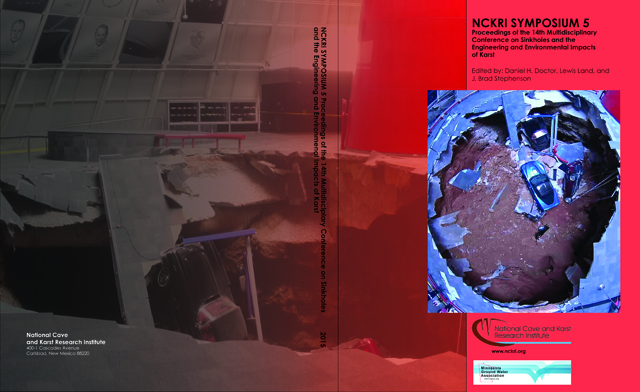Abstract
The existence of caves represents a hazard for urban areas. Therefore it is important to know the size, position and depth of caves before building or reconstruction. Cavity imaging using geophysical surveys has become common in the San Antonio area since early 2000 although their use has been going on in other parts of country for the last 25 years. It appears from these studies that the resistivity imaging method has been the primary technique among others, such as gravity, ground penetrating radar (GPR), magnetic, conductivity, and self-potential (natural potential). This study mainly describes resistivity imaging and natural potential data (NP), and some other geophysical data collected over several known and unknown caves during the study between the years of 2000 and 2015. All caves but one was encountered through drilling and/or excavation for building and utility lines or power pole reconstructions. The study area falls into the part of the Recharge Zone of the Edwards Aquifer region and it represents a well- developed karstified and faulted limestone in the Austin and San Antonio areas. 2D resistivity imaging data is presented as a colored 2-D electrical image of subsurface (i.e. a vertical cross section of the distribution of subsurface resistivity). Such a display section indicates low, medium, and high resistivity areas and the structural configuration of the subsurface geology. Based on our 15 years of experience working with resistivity data, we like to indicate that all range of resistivity values (low to high) can cause caves and voids. However, purely air-filled cavities cause high resistivity anomalies whereas clay-filled caves are the source of low resistivity anomalies. But it is rarely that caves are purely filled with air. A variety of sediments accumulates in caves and can be preserved more or less intact for long periods of time. Presence of sand and gravel and clay deposits, mineralization, faults and fractures, perched water in caves are the rules rather than the exception. It is clear from this body of work over the 15 years that the resistivity method does not always successfully delineate the location of caves and other karstic features. However, it provides significant information on the near-surface geology and geological structure. The NP data, on the other hand, notably defines the location of karstic features. This study thus demonstrates that the resistivity method is not always a reliable predictive technique, but is useful in karst terrains to cover large areas quickly and, the merits of integrating natural potential method, in order to reduce the ambiguity in the interpretation, are quite evident from the case studies.
DOI
http://dx.doi.org/10.5038/9780991000951.1090
Included in
The Million Dollar Question: Which Geophysical Methods Locate Caves Best Over the Edwards Aquifer? A Potpourri of Case Studies from San Antonio and Austin, Texas, USA
The existence of caves represents a hazard for urban areas. Therefore it is important to know the size, position and depth of caves before building or reconstruction. Cavity imaging using geophysical surveys has become common in the San Antonio area since early 2000 although their use has been going on in other parts of country for the last 25 years. It appears from these studies that the resistivity imaging method has been the primary technique among others, such as gravity, ground penetrating radar (GPR), magnetic, conductivity, and self-potential (natural potential). This study mainly describes resistivity imaging and natural potential data (NP), and some other geophysical data collected over several known and unknown caves during the study between the years of 2000 and 2015. All caves but one was encountered through drilling and/or excavation for building and utility lines or power pole reconstructions. The study area falls into the part of the Recharge Zone of the Edwards Aquifer region and it represents a well- developed karstified and faulted limestone in the Austin and San Antonio areas. 2D resistivity imaging data is presented as a colored 2-D electrical image of subsurface (i.e. a vertical cross section of the distribution of subsurface resistivity). Such a display section indicates low, medium, and high resistivity areas and the structural configuration of the subsurface geology. Based on our 15 years of experience working with resistivity data, we like to indicate that all range of resistivity values (low to high) can cause caves and voids. However, purely air-filled cavities cause high resistivity anomalies whereas clay-filled caves are the source of low resistivity anomalies. But it is rarely that caves are purely filled with air. A variety of sediments accumulates in caves and can be preserved more or less intact for long periods of time. Presence of sand and gravel and clay deposits, mineralization, faults and fractures, perched water in caves are the rules rather than the exception. It is clear from this body of work over the 15 years that the resistivity method does not always successfully delineate the location of caves and other karstic features. However, it provides significant information on the near-surface geology and geological structure. The NP data, on the other hand, notably defines the location of karstic features. This study thus demonstrates that the resistivity method is not always a reliable predictive technique, but is useful in karst terrains to cover large areas quickly and, the merits of integrating natural potential method, in order to reduce the ambiguity in the interpretation, are quite evident from the case studies.

